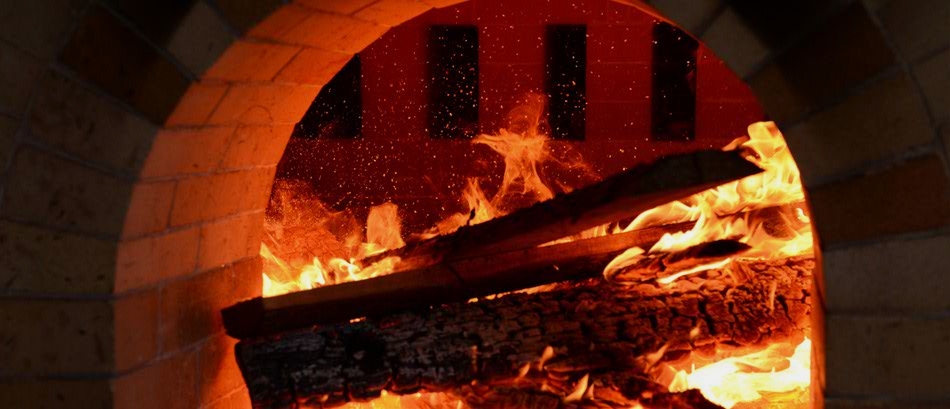Even now, wood kilns enjoy extensive use in the Karatsu area. The biggest difference is that in the past, large wood kilns were fired by large groups of potters cooperatively, whereas during present day the kilns are fired by much smaller groups, usually guided by the creative approach of an individual potter.
Developments and improvements in kiln technology such as refractory materials, temperature measurement, and kiln design have resulted in much more efficient wood kilns which can be built and fired by individuals. Other types of modern kilns such as gas fueled and electric kilns are used by many people, however the unique atmosphere of wood fired work has made wood firing the preferred method of firing for many Karatsu potters.
ANATOMY OF A CLIMBING KILN (Reference: Ryunosukegama / Saga University Ceramics Department)
- Foundation
Stability and good drainage is necessary for a kiln foundation. The use of natural slope (such as a hillside) is common, as is the use of stones and concrete to create a slope. Usually 12 – 15 degrees is considered ideal. 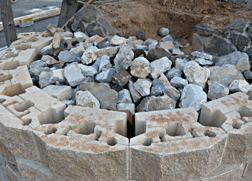

- Brickwork
Old kiln were generally constructed of clay, however in modern times, heat efficient refractory bricks are available. Care must be taken so that the shape, refractoriness, and joint orientation when stacked are suitable for the part of the kiln which is being constructed.
For areas of the kiln requiring the use of odd shapes such as stokes or arches, standardized bricks are available, or if not, bricks are modified to suit the task. On the interior of the kiln refractory mortar is used between bricks. On the exterior, where high temperatures are not an issue, red clay is used.
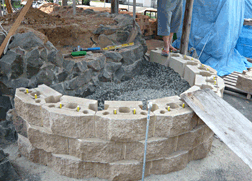
 1. The kiln floor: a thick, durable surface over the foundation.
1. The kiln floor: a thick, durable surface over the foundation.
2. The wall: thickness will vary depending on overall size.
3. The ceiling: if building an arch shape, a wood form is first constructed, over which the bricks are stacked.
4. The chimney: the volume of the cross section and the height both influence the strength of the draft, so the size of both must be calculated based on the size of the kiln.

- Glossary of terms
1. Grates (Primary Air)
The primary air intake located under the main stoke, and toward the front of the firebox. Temperature climb and kiln atmosphere are controlled during the firing by adjusting the volume of air entering the kiln.

2. Flue channels
These are the channels through which the air and flame pass between chambers to the chimney at the rear of the kiln. By keeping the center flues smaller, and the side flues wider, a more even temperature gradient is reached.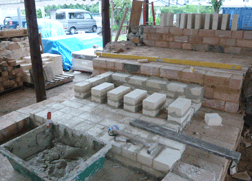

3. Stoke
Each chamber features a hole through which wood is stoked. Larger kilns may have two holes for each chamber, one on each side.
Fire bed
Where the stoked wood burns after it falls into the kiln. It is usually a step down from where the ware is stacked.
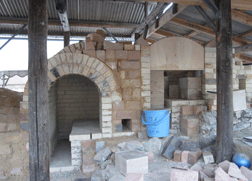

4. Fire brick (refractory brick)
Standard sized brick which has a high heat resistance, usually marked on the brick with an “SK” followed by a number, indicating the level of heat resistance.
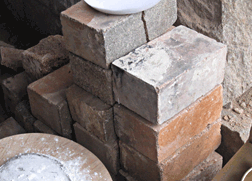

5. Tonbai
Large bricks produced for kiln building purposes, softer and less dense than fire brick, and consequently easier to modify during the building process. They were commonly used a long time ago, but have become increasingly uncommon.
 Source: Hito-Mono-tsukuri Karatsu Project of Saga University
Source: Hito-Mono-tsukuri Karatsu Project of Saga University
Cooperation: Ryunosuke Hamada
Hito-Mono-tsukuri Karatsu Project of Saga University
Professor Yuhki Tanaka / Kazumasa Yoshinaga / Kazunari Hashimoto / Masanori Jo /
Akiko Setoguchi

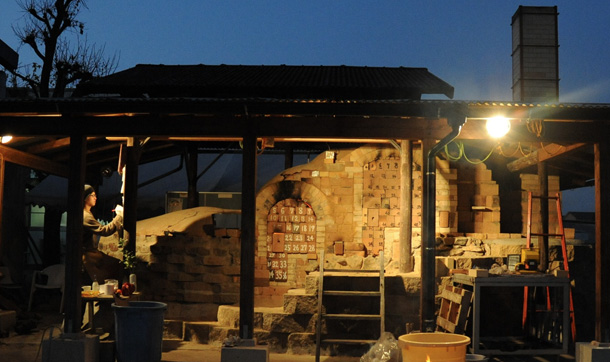 |
| A climbing kiln consists of a firebox, ware chambers, a flue channel, and a chimney, all of which change in design depending on the type of work desired. Flame circulation and insulation are two very important factors in determining the heat efficiency of a kiln. Parts of the kiln exceed 1200 degrees Celsius, and refractory materials with sufficient heat resistance must be utilized. The main goal of a firing is to heat the wares sufficiently, however the use of suitable materials in the various areas is necessary for a heat efficient kiln. |
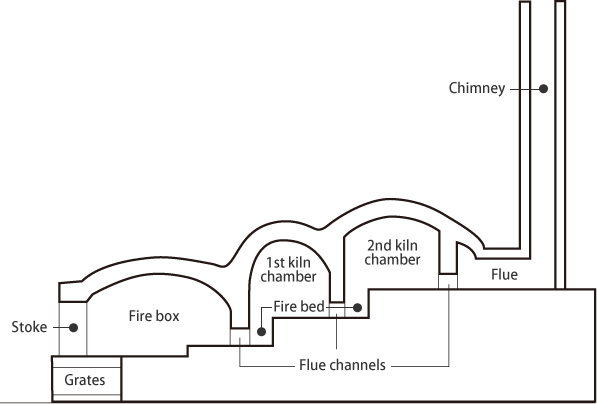 |

